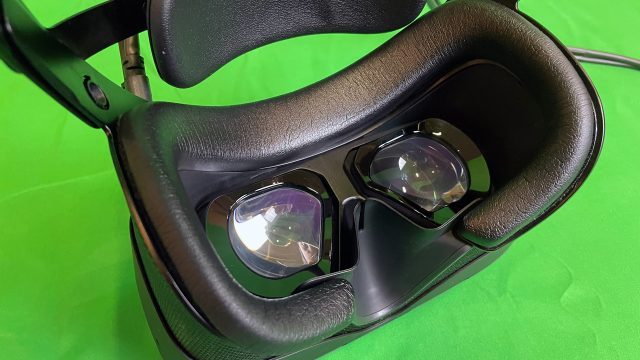
By now it can be said that Varjo is making the world’s most high-end VR headsets, and not just because they’re slapping on a hefty price-tag. With a core premise of ‘retina resolution’ that really delivers, Varjo’s headsets keep getting better even as they’re getting cheaper. Their visual performance offers an early glimpse of what mainstream VR headsets are unlikely to deliver for years to come.
We’ve been following Varjo since even before the launch of their first VR headset. Every time we’ve glimpsed a new headset from the company, there’s been clear progress in their mission to deliver the sharpest visuals of any VR headset. Varjo’s latest headset, the XR-3, is no exception.
During a meeting with the company in Silicon Valley I got fairly extensive hands-on time with the XR-3, both with its VR and AR capabilities. Despite being its least expensive headset yet, it’s also clearly the company’s best so far.

Cheaper but Not Cheap
Granted, the company’s headsets are far from anything you’d call affordable. At a whopping $5,500 (+$1,500 annually), XR-3 is the high-end of the high-end. But it’s a steal compared to the prior Varjo XR headset which cost $10,000 (+$1,000 annually). Meanwhile, the VR-3 (the model without advanced passthrough or inside-out tracking) has come down to just $3,200 (+$800 annually).
A Better Bionic Display
All of Varjo’s headsets make use of what they call the ‘bionic display’ system which makes use of a large ‘context display’ for a wide field-of-view, with an overlapping ‘focus display’ for true retina resolution (60+ PPD) at the center of the view. That’s two displays for each eye.

The company’s earliest prototypes proved that the company’s unique display system really could deliver retina resolution at the center of the image, but it came with a handful of caveats. I used to have to make mockups (like this) to make it clear to people that only the very center of the display was retina quality and that the boundary between the focus display and the context display was quite apparent.
Varjo’s headsets have gotten better about this over the years, and on the XR-3, the boundary between the focus display and the context display is nearly invisible. This is thanks not only to better blending between the displays, but also because the lower fidelity context display (which provides the wide field-of-view) itself has been boosted in resolution significantly over previous models. Even if the XR-3 didn’t have a focus display for retina resolution at the center of the image, the resolution of the context display alone (2,880 × 2,720) exceeds something like the Vive Pro 2 (2,448 × 2,448).
It’s thanks to this boost in resolution that moving your eyes away from the focus display no longer brings an obvious reduction in quality. This makes it feel much more natural to look around with your eyes in XR-3, whereas on earlier headsets it could feel like you had to train yourself not to let your eyes wander from the center of the field-of-view. This pairs nicely with an expanded overall field-of-view compared to the prior version of the headset, which jumps from 87° to 115°, according to Varjo.
In practice, donning the headset reveals a higher fidelity view than I’ve seen in any other VR headset to date. The center of the field-of-view is truly ‘retina resolution’—the screen-door effect is non-existent and there’s not a hint that the center of the image is even made of pixels.

While the fidelity of the image is truly world class, there is one notable issue that kept me from being lost in it entirely. On XR-3 I noticed a surprising amount of pupil swim, which makes the image look wobbly as you move your head around, especially when you lock your eyes onto an object in the scene and continue to move your head. The effect was bad enough that I expect it will cause discomfort to some users who are very sensitive to motion sickness.
I don’t know the exact cause of the pupil swim on XR-3. It could be inherent in the lenses, or it could be a calibration issue. And while I didn’t have the company’s other headsets to go side-by-side with, I don’t recall noticing it so clearly on prior models. Hopefully it’s something that can be fixed.
Continue on Page 2: Passthrough AR & Ergonomics »
The post Varjo XR-3 Hands-on: Varjo’s Headsets Keep Getting Better, Even as They Get Cheaper appeared first on Road to VR.
from Road to VR https://ift.tt/3fandx0
via IFTTT
No comments:
Post a Comment